HP HPE6-A75 Exam Questions
Questions for the HPE6-A75 were updated on : Jun 25 ,2025
Page 1 out of 4. Viewing questions 1-15 out of 60
Question 1
Refer to the exhibit.
A network administrator sets up 802.1X authentication to a RADIUS server on an AOS-Switch. The
RADIUS server and user devices are both set up to use REAP MSCHAPv2. The administrator tests the
authentication and sees the output shown in the exhibit. Which issue could cause this output?
- A. The RADIUS shared secret does not match on the switch and the server.
- B. The administrator entered the wrong password for the test account.
- C. The switch does not have a certificate tor port-access installed on the switch.
- D. The switch port is set for user mode 801. IX. but the RADIUS server is set for port mode.
Answer:
A
Question 2
Refer to the exhibits.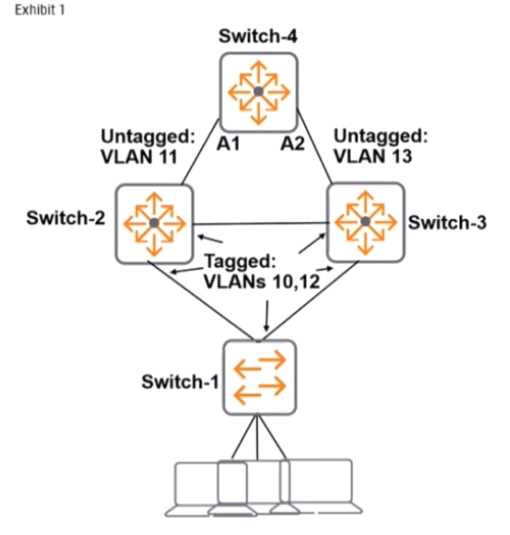
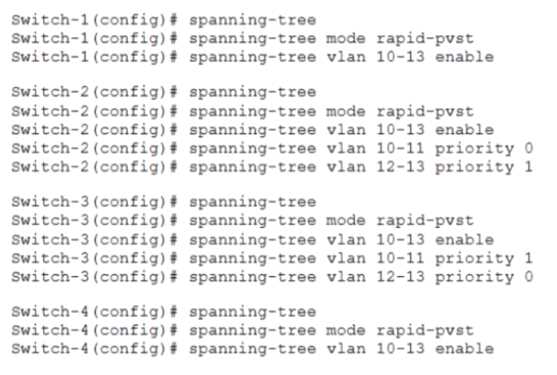
The network administrator enters the commands shown in Exhibit 2. What is the spanning tree
status on Al and A2?
- A. A1 towards traffic, and A2 blocks traffic.
- B. Both Al and A2 block traffic.
- C. A1 blocks traffic, and A2 forwards traffic.
- D. Both A1 and A2 forward traffic
Answer:
D
Question 3
A company has AOS-Switches deployed at sites with inexperienced IT staff. The main office network
administrators want to track if configurations change on branch switches. What should be set up for
this purpose?
- A. an SNMP trap
- B. an RMON alarm
- C. an auto-config server
- D. an lP SLA profile
Answer:
A
Question 4
A network administrator configures V5F settings on two Aruba 2930F switches. The switches form
two separate VSF fabrics. What should the administrator check?
- A. that the domain ID matches on both switches
- B. that each switch is assigned a unique VSF priority
- C. that the switch with the lower priority has the lower member ID
- D. that LLDP MAD is configured on both members
Answer:
C
Question 5
Refer to the exhibit.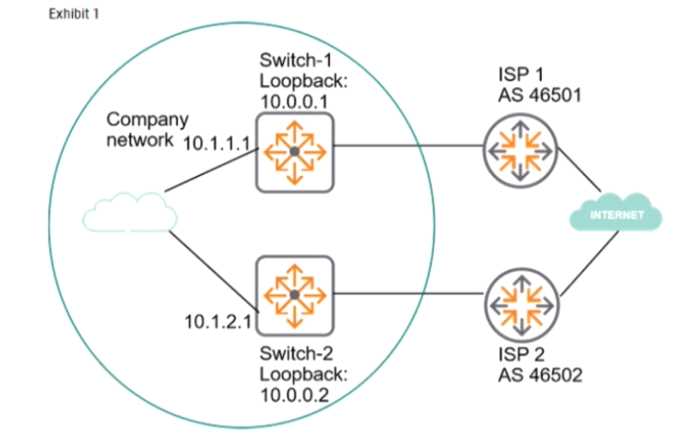
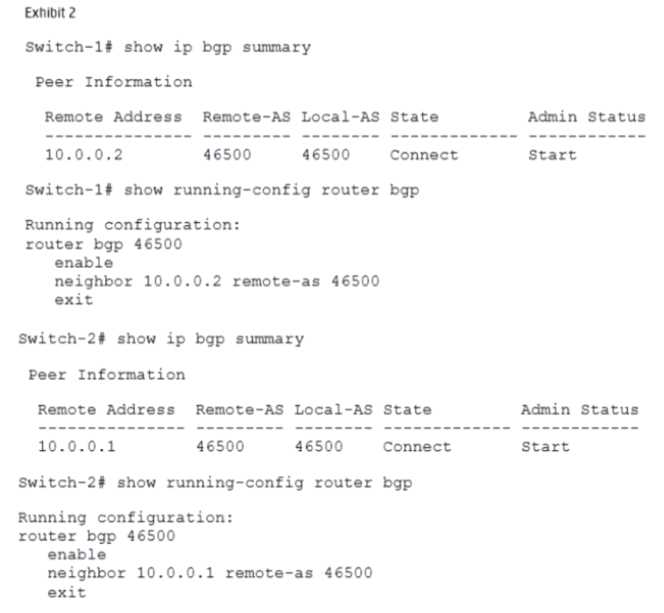
The network administrator needs to set up BGP between the two company switches. Switch-1 and
Switch-2. The BGP connection does not establish. Based on the exhibits, what does the administrator
need to do to fix the issue?
- A. Enable the multihop option for the neighbor on each of the switches.
- B. Enter the network command for 10.0.0.0/24 in the router BGP mode on each switch.
- C. Enable BGP on the interfaces that the switches use to reach each other.
- D. Set the update source for the neighbor to the local loopback interface on each switch.
Answer:
D
Question 6
What is the purpose of the captive portal URL hash key on an AOS-Switch?
- A. It authenticates guest users based on the password the users enter hi the portal.
- B. It encrypts and secures the RADIUS messages that the AOS-Switch sends to ClearPass.
- C. It does not let users alter the URL that redirects them to the portal.
- D. It specifies the captive portal URL and conceals the setting in the config.
Answer:
C
Question 7
OSPF is configured on an AOS-Switch, and the network administrator sets the router ID to 10.0.0.1.
The administrator wants to be able to reach the switch at this ID from any location throughout the
OSPF system. The administrator also needs the router ID to De stable and available, even if some
links on the switch fail.
What should the administrator do?
- A. Make sure that 10.0.0.1 is the IP address on the VLAN with the lowest ID.
- B. Configure 10.0.0.1 on a loopback interface, and enable OSPF on that interface.
- C. Configure 10.0.0.1 as a manual OSPF neighbor on each switch in the OSPF system.
- D. Configure 10.0.0.1 as a secondary IP address on the switch 00BM poet.
Answer:
B
Question 8
Refer to the exhibit.
Several interfaces on an AOS-Switch enforce 802. IX to a RADIUS server at 10.254.378.521. The
interface 802. IX settings are shown in the exhibit, and 802. IX is also enabled globally. The security
team have added a requirement tor port security on the interfaces as well. Before administrators
enable port security, which additional step must they complete to prevent issues?
- A. Set an 802. l X client limit on the interfaces.
- B. Manually add legitimate MAC addresses to the switch authorized MAC list.
- C. Enable eavesdropping protection on the interfaces.
- D. Enable DHCP snooping on VLAN 20.
Answer:
D
Question 9
Refer to the exhibit.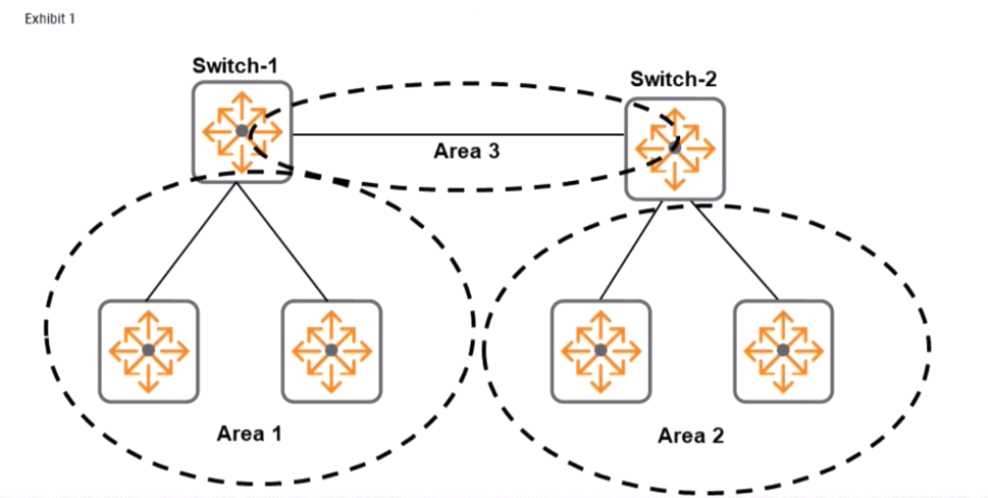
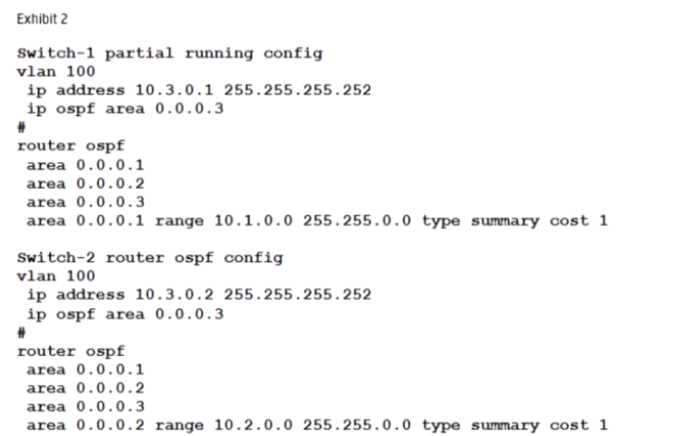
A company has attempted to implement OSPF without success. The devices in Area I need to be able
to reach Area 2. Routes should be aggregated for advertisement in other areas. What must be
changed to meet these requirements?
- A. Change Area 3 to Area 0; remove Area 1 from Switch-2 and Area 2 from Switch-1.
- B. Add the 10.2.0.0/16 range on Swttch-1 and the 10.1.0.0/16 range on Switch-2.
- C. Add Area 1 and Area 2 on VIAN 100 on both Switch-1 and Switch-2. Remove Area 3.
- D. Move the 10.1.0.0/16 range to Area 2 on Switch-1 and the 10.2.0.0/16rangetoArea 1 onSwitch-2.
Answer:
A
Question 10
Refer to the exhibit.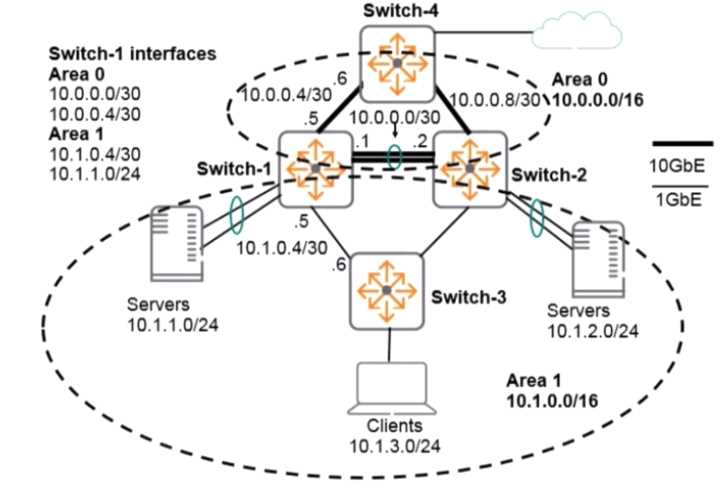
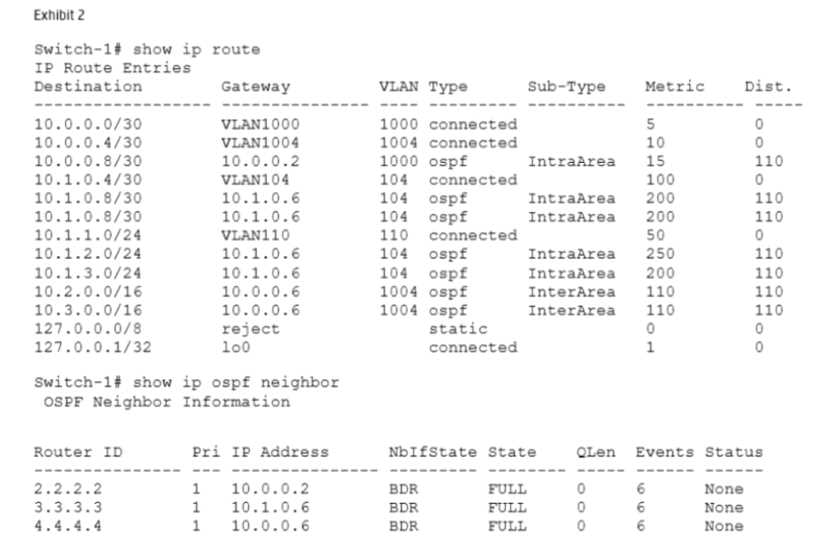
Traffic between the servers m Area l takes a less optimal path rather than the link associated with
VLAN l OOO, subnet 10.0.0.0/30. Based on the exhibits, why is this the case?
- A. The metric on the VLAN 1000 interface is too low.
- B. Switch-1 and Switch-2 cannot achieve adjacency on VLAN 1000 due to mismatches.
- C. OSPF routing switches choose the best intra-area routes based on Area 1 links only.
- D. The link between Switch-1 and Switch-2 has gone down.
Answer:
C
Question 11
Refer to the exhibit.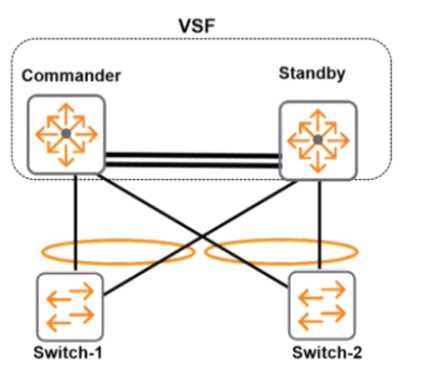
A known unicast packet is received from Switch-1 on the standby and must be forwarded to Switch-2.
How does the VSF fabric decide which port in the aggregated (ink should forward the packet?
- A. The standby uses its own port in the link aggregation to forward the fabric.
- B. The standby sends the packet to the commander over a VSF link, and the commander decides the correct port.
- C. The standby uses the typical load sharing algorithm, and it might select either its port or the commanders port.
- D. The standby selects the port on the designated forwarder for the aggregation.
Answer:
A
Question 12
A network administrator wants to use Aruba AirWave to audit an AOS-Switch configuration. What rs
one requirement?
- A. The switch defines the AirWave IP address in its zero touch provisioning (ZTP) profile.
- B. The switch specifies the AirWave IP address for the RADIUS server used for Telnet and SSH authentication.
- C. The switch is authorized in AirWave, which has the correct credentials to log in as a CLI manager.
- D. The switch is set to Manage Read-Write mode in AirWave but is not set to Monitor Only + Firmware Updates.
Answer:
B
Question 13
What is a primary use case for RPVST+ on AOS-Switches?
- A. more granular load balancing than MSTP when access switches connect to two core switches
- B. enhanced loop protection in an MSTP network
- C. integration of AOS-Switches in a heterogeneous vendor network that uses the Cisco protocol
- D. seamless integration with RSTP
Answer:
C
Question 14
Refer to the exhibit.
Switch-1 and Switch-2 connect on interface A23. The switches experience a connectivity issue. The
network administrator sees that both switches show this interface as up. The administrator sees the
output shown in the exhibit on Switch-1.
What is a typical issue that could cause this output?
- A. a hardware issue, such as a broken cable
- B. asymmetric routing introduced by a routing configuration error
- C. an issue with queuing, caused by mismatched QoS settings
- D. mismatched IP addresses on the VLAN for the link
Answer:
A
Question 15
A company has AOS-Switches, Aruba ClearPass, and Aruba Airwave. A network administrator needs
to set up a new switch with the same settings found on other switches in the company. Which action
rs likely to be the most useful to perform the task?
- A. Access the Network Device view on ClearPass.
- B. Use the configuration audit tool on AirWave.
- C. View the current running config on each switch.
- D. View usage patterns on the switches on AirWave.
Answer:
A